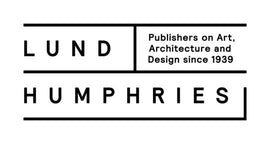The Outsider as Witness: Displaced Visions by Nissan Perez and Grim Glory by Ernestine Carter
In his Lund Humphries Landmark post on Ernestine Carter’s Grim Glory (1941), Antony Penrose describes the efforts of his mother, Lee Miller, and a number of other prominent photographers to raise US consciousness about the hardships and the horrors of the London Blitz. Miller, he explains, had come to the UK from New York in 1939, having begun a relationship with the British Surrealist artist Roland Penrose. The acuity of Miller’s photographic gaze as she communicates the transformation of her adopted city is striking.
In Indecent Exposure? (1940), for instance, Miller gestures at the topsy-turvy nature of life amid frequent bombardments. On the one hand, the two tailor’s dummies, with their chiselled faces and elegant hats, seem ill-at-ease in their new home amongst the curbside debris. On the other hand, the spectacle of the indoors cast outdoors has already become run-of-the-mill, a daily occurrence met with the attitude of calm endurance modelled here by the bobbies on the beat pictured at the left edge of the frame. More remarkable, perhaps, is that Miller captures something of the collective spirit which helped to foster this endurance. As its title signals, Miller’s picture gently mocks a stereotypical – but nonetheless then prevalent – British prudishness about public nudity. Doubtless, a US audience would have enjoyed this joke, but so, too, would Miller’s fellow Londoners. Again the two policemen are co-opted; as a visual reminder of the potential penal consequences of ‘indecency’ and, more daringly, as doubles for the two dummies, the viewer being invited to transpose mentally the mannequins’ state of undress onto the officers. The chaos continues, the photograph says, but so does the population’s ability not to take itself too seriously – a sense of humour which lent itself to social cohesion.
The idea that the outsider, specifically the migrant, can prove the most effective witness to the realities of a society is one explored by academic and curator Nissan Perez in Displaced Visions: Emigré Photographers of the 20th Century (2013). Perez explains: ‘The twentieth century, a time of great social upheavals, was also the golden age of photographic Modernism. It saw mass movements of camera practitioners commuting between countries and taking their apparatus to hitherto unknown territories.”
Unlike tourists, emigré photographers sought to open a dialogue with their new homelands; they noticed surface differences, then dug down deeper to locate and convey the social, political and cultural codes required to unpick this distinction. Unsurprisingly, the resulting productions often challenged prevailing mores. Perez cites Bill Brandt’s observation that “[i]t is part of the photographer’s job to see more intensely than most people do.”

Bill Brandt, Parlourmaid and Under-Parlourmaid Ready to Serve Dinner, 1933. Gelatin silver print. The Israel Museum, Jerusalem; gift of the artist.
In the case of the emigré photographers Perez investigates, this intensity of vision is not only perceptible in the images’ social critique but also in their formal experimentation. The embrace of photographic Modernism (abstraction, for instance, through the decontextualisation of forms or the use of ‘unnatural’ camera angles) is thoroughly consonant with 20th-century migrants’ broader ethos of flexibility and adaptation – Perez discusses the name changes undergone by photographers “keen to fit in better”. It is also an effect of their peculiar, imposed freedom as artists, being as they were unaware of and hence “not bound by local conventions, taboos, and artistic precepts.”
Overall, then, it is a capacity to transform, to simultaneously render both more and – through a revelation of their underlying scaffolding and hence constructedness – less real the specificities of place and people, which distinguishes the photographers whose work Perez has selected for his book. This, too, is the trick pulled off by Lee Miller’s images of wartime London: yes, they expose the grimness of conflict but they also emphasise the glory – the human spirit – of the city which endures.
Celia Dunne, Publishing Assistant
Displaced Visions: Emigré Photographers of the 20th Century by Nissan Perez, featuring the work of nearly 100 photographers, including Lee Miller. Published in association with the Israel Museum, Jerusalem. July 2013. Hardback, 303 x 240 mm, 240 pages. 978-1-84822-130-7. £40.00



